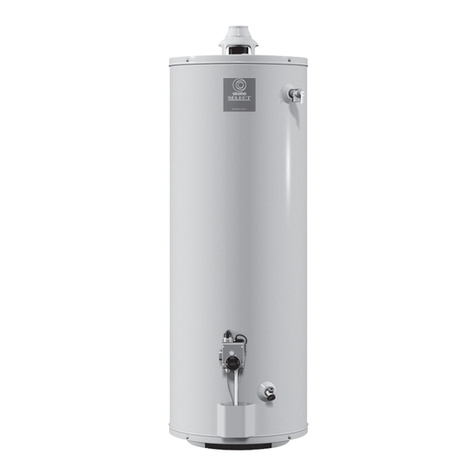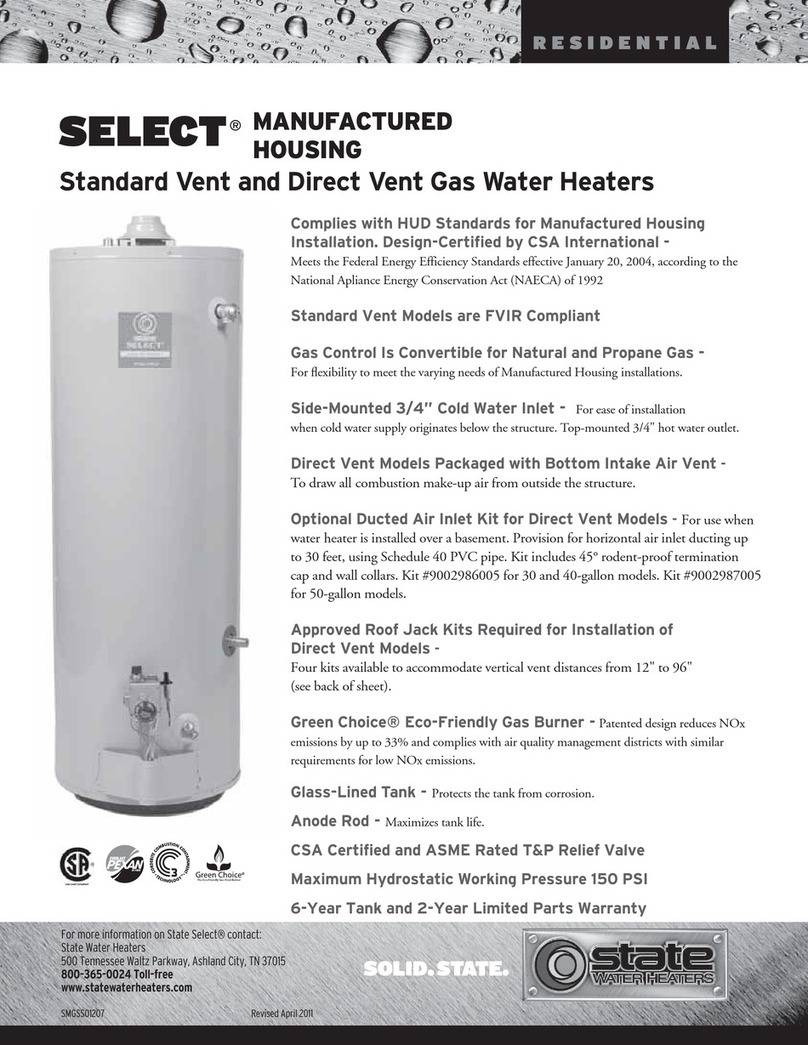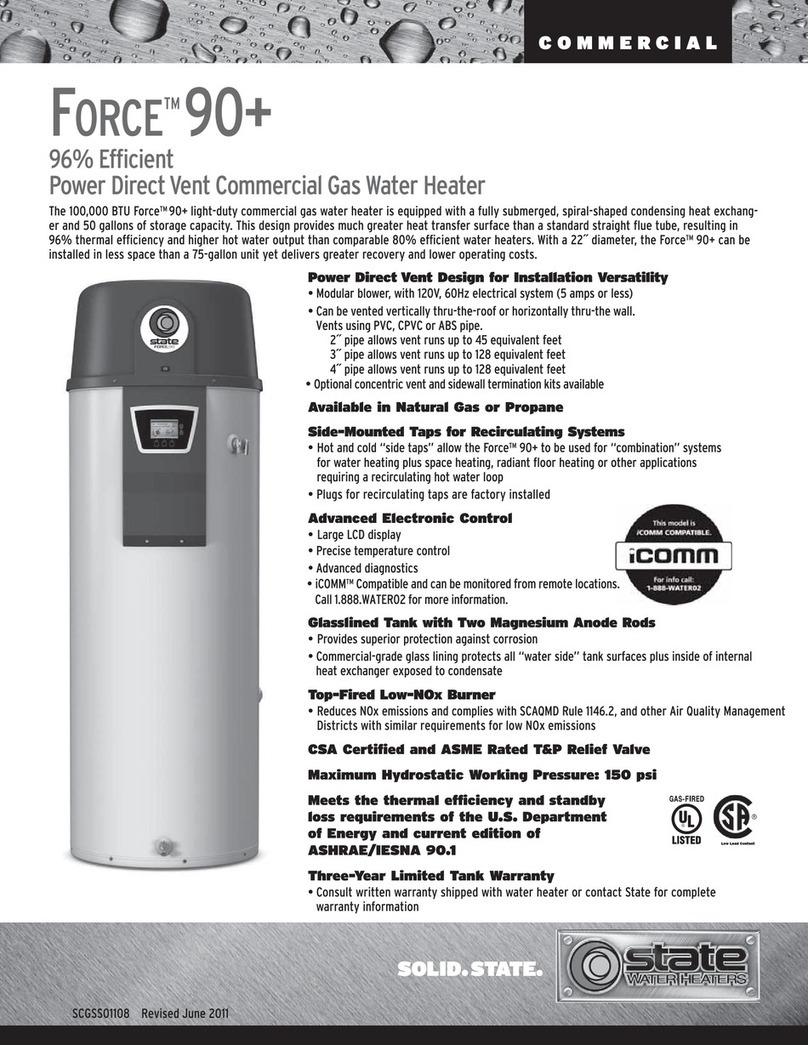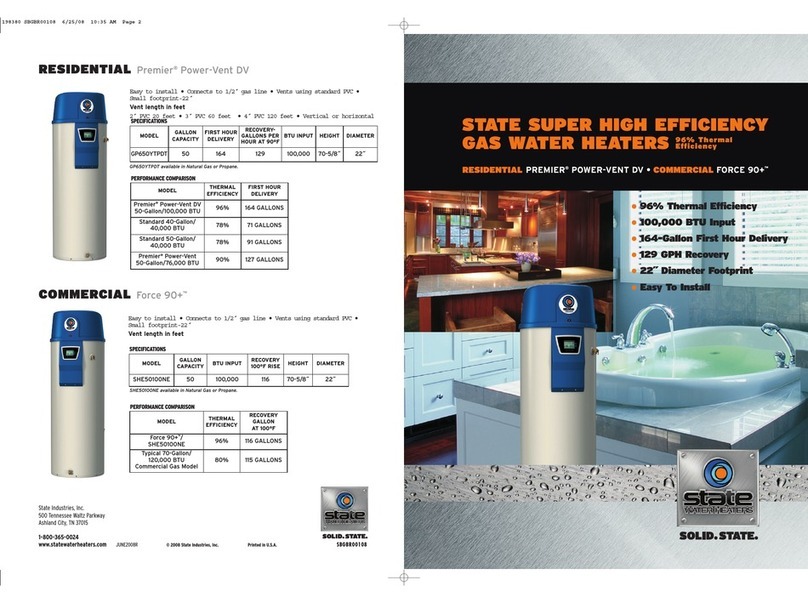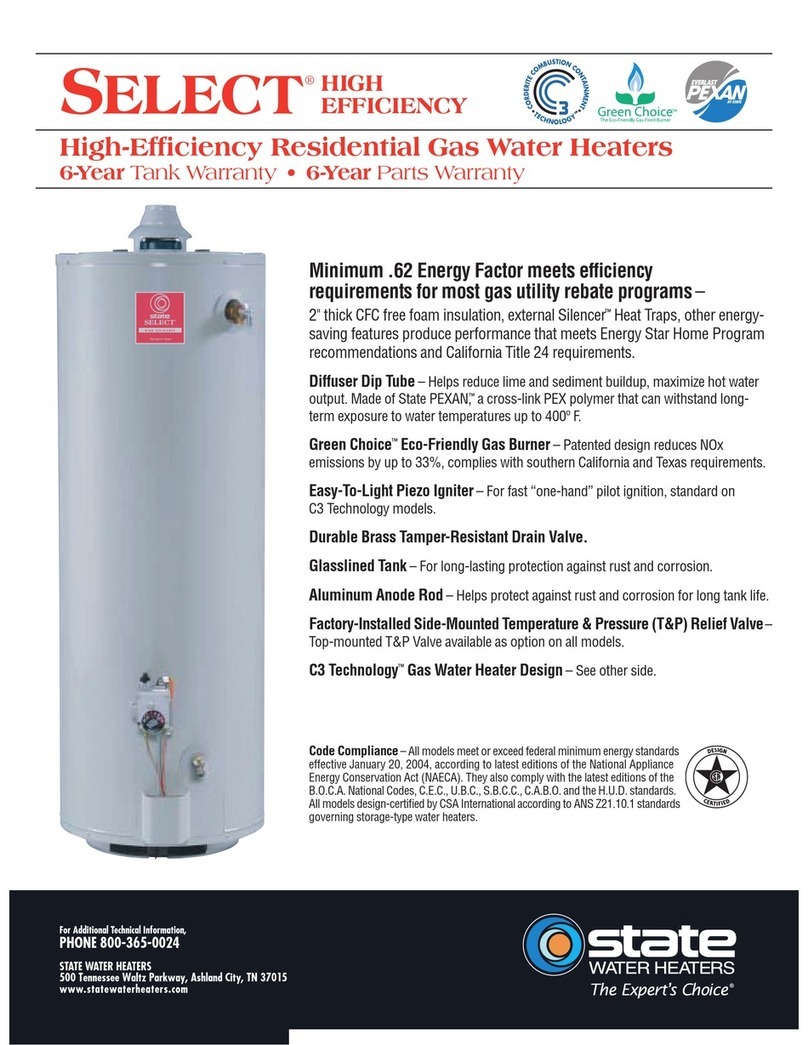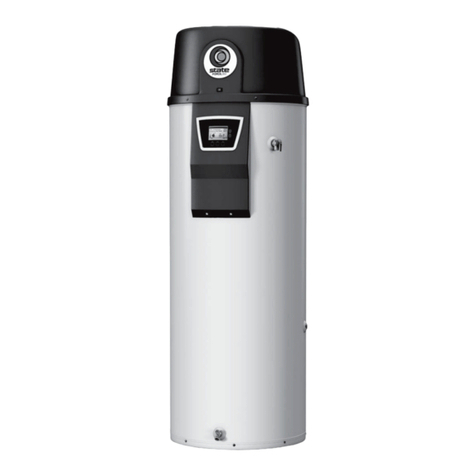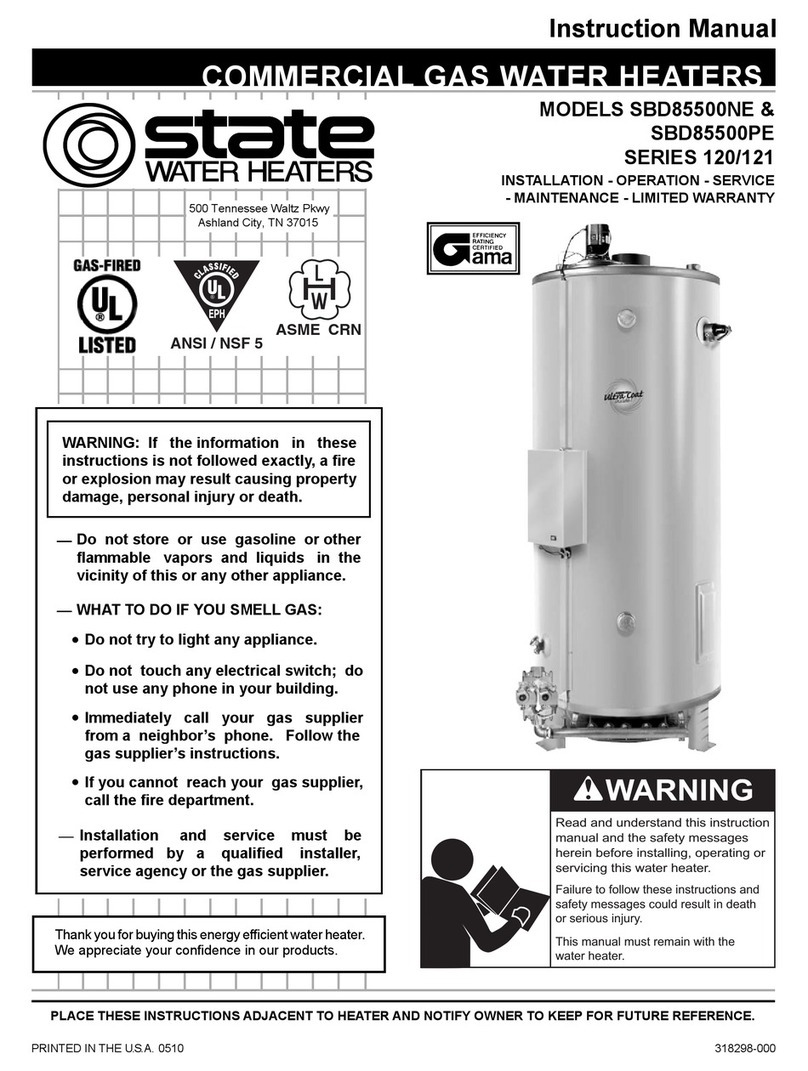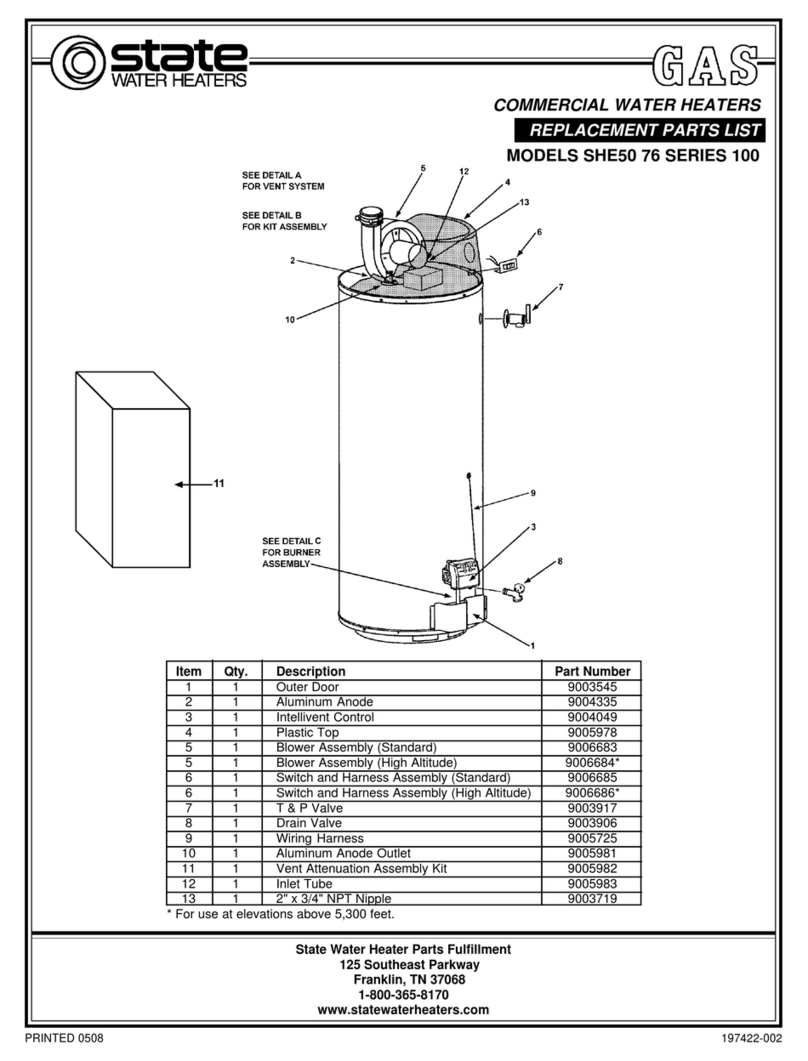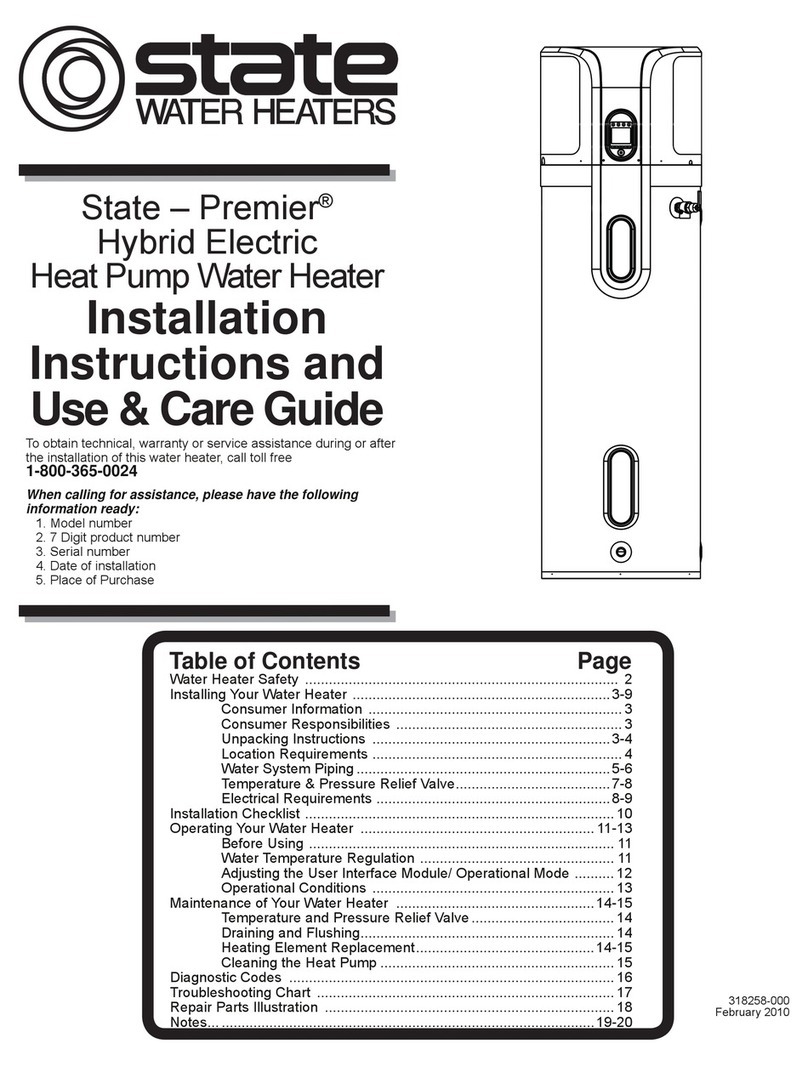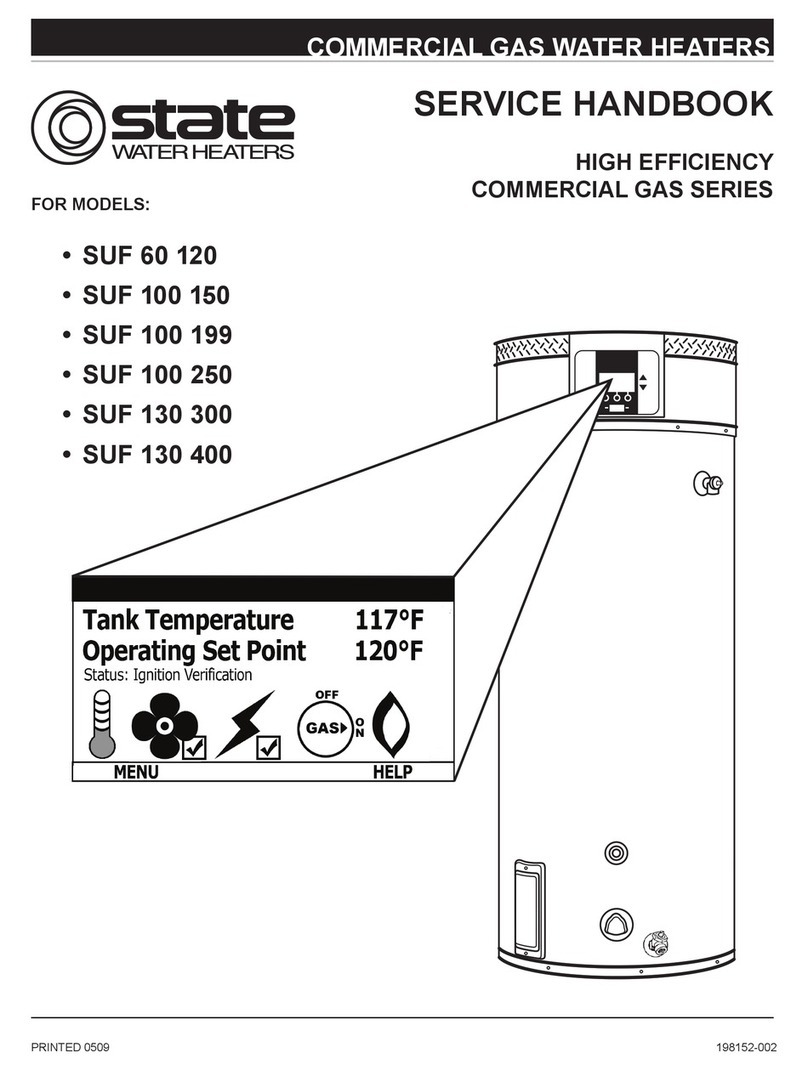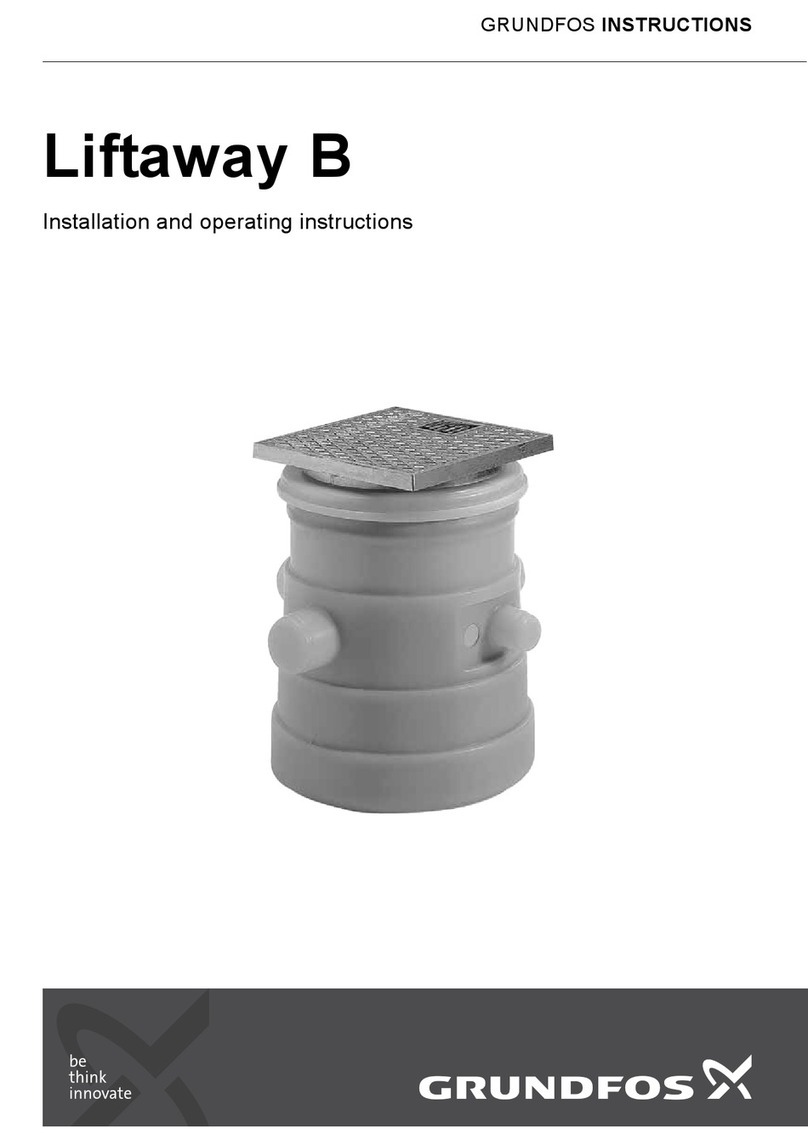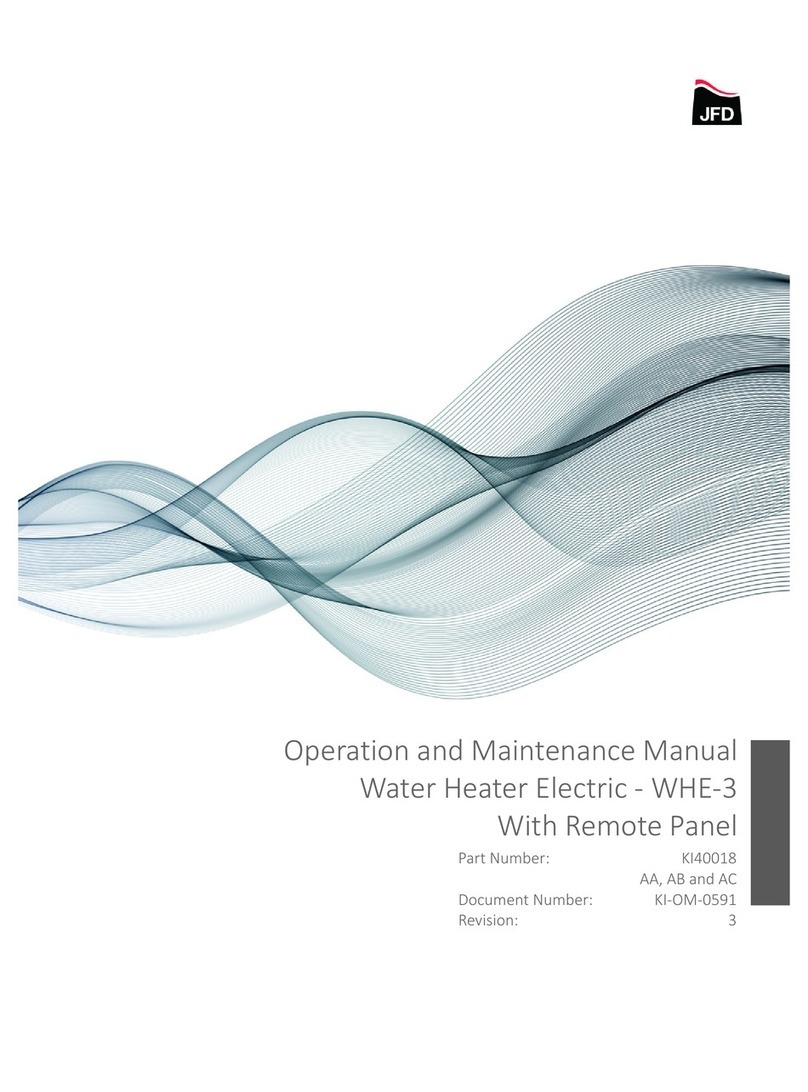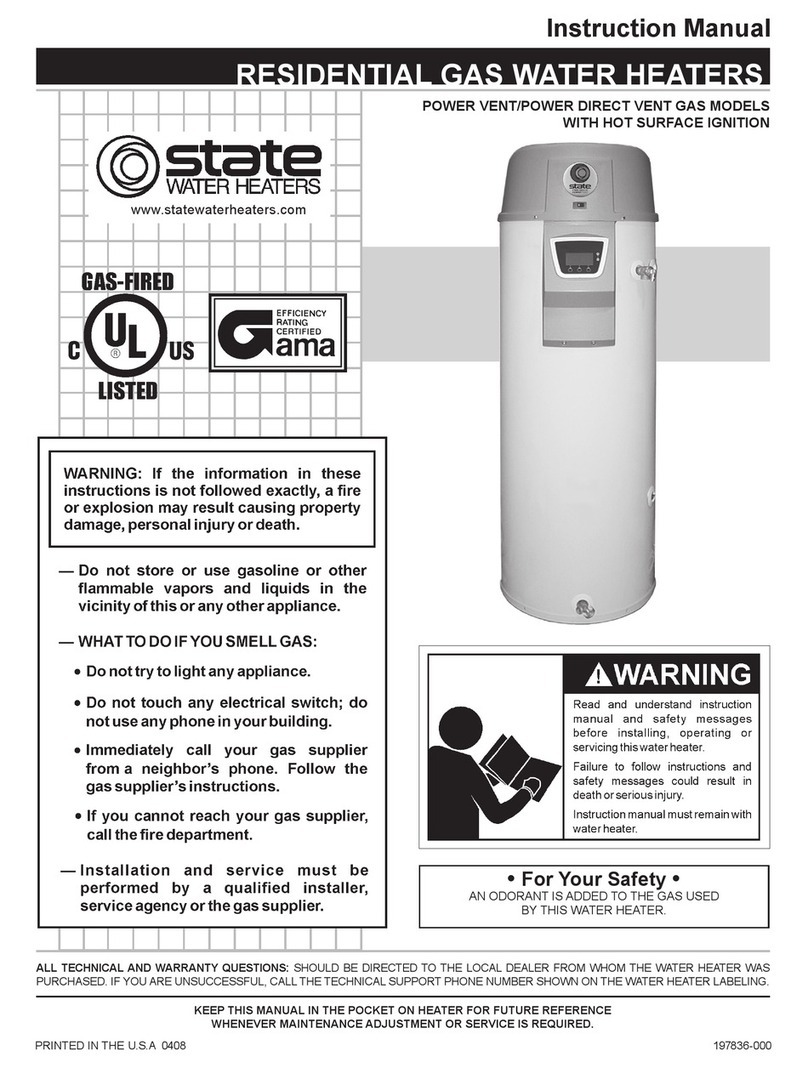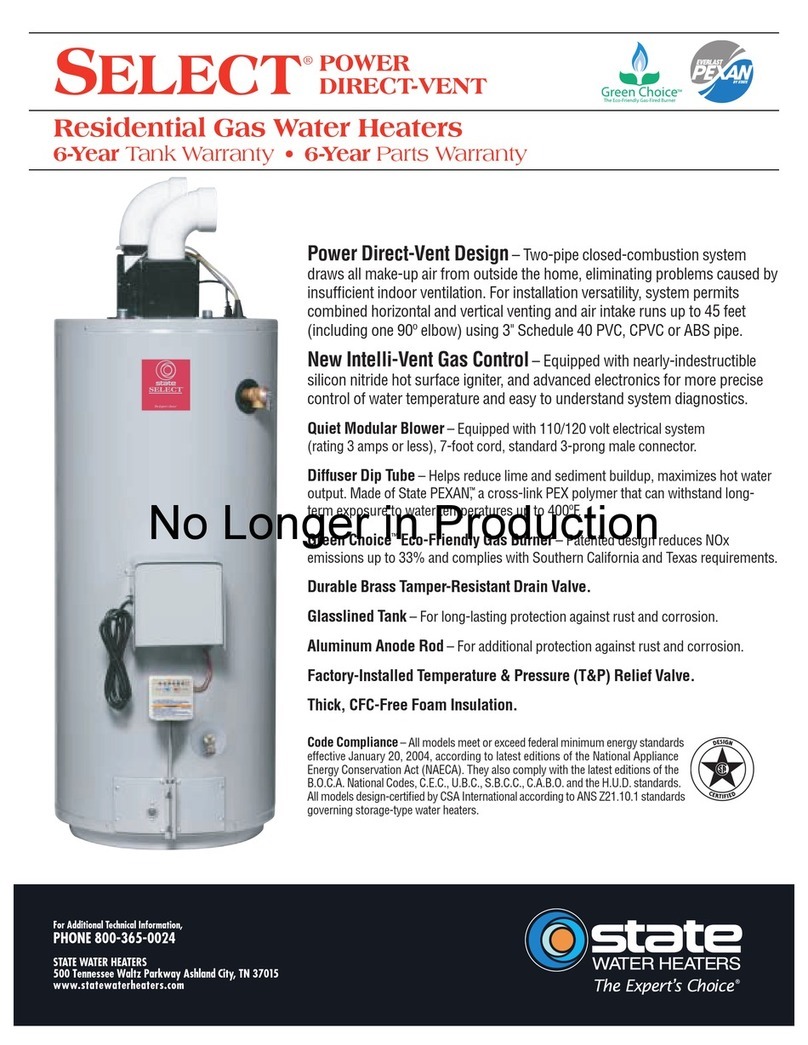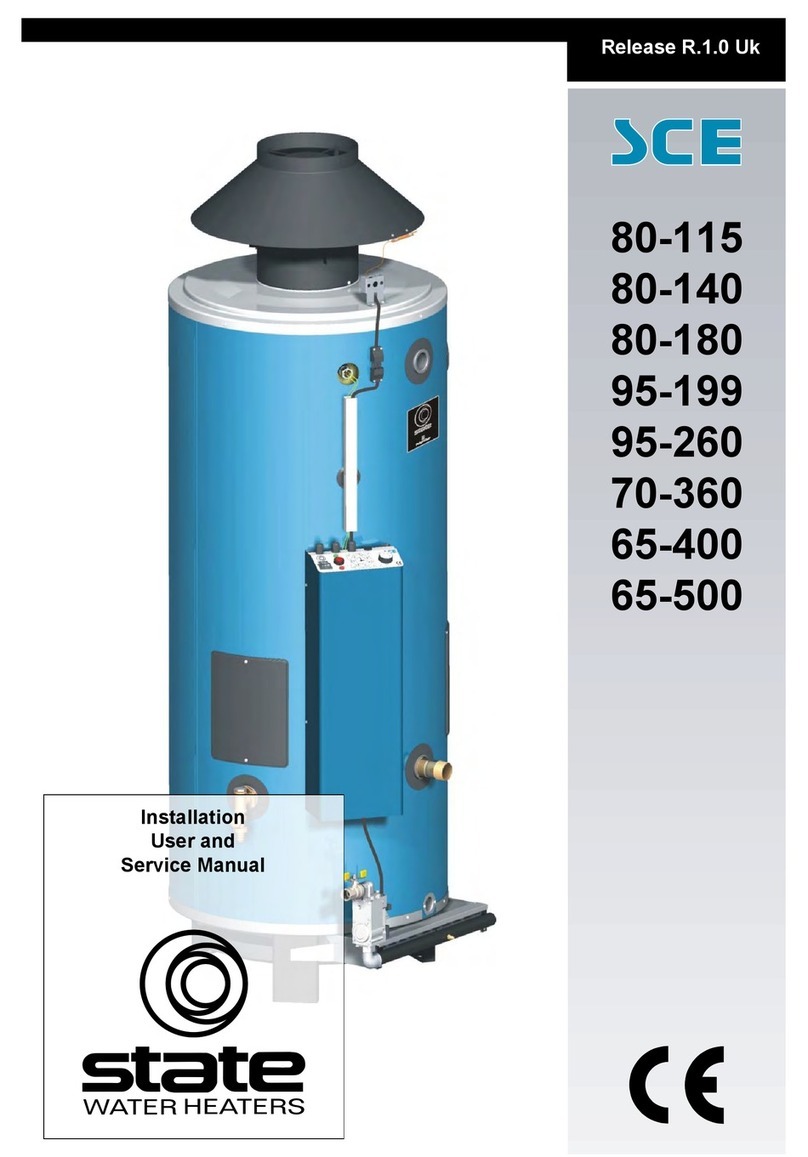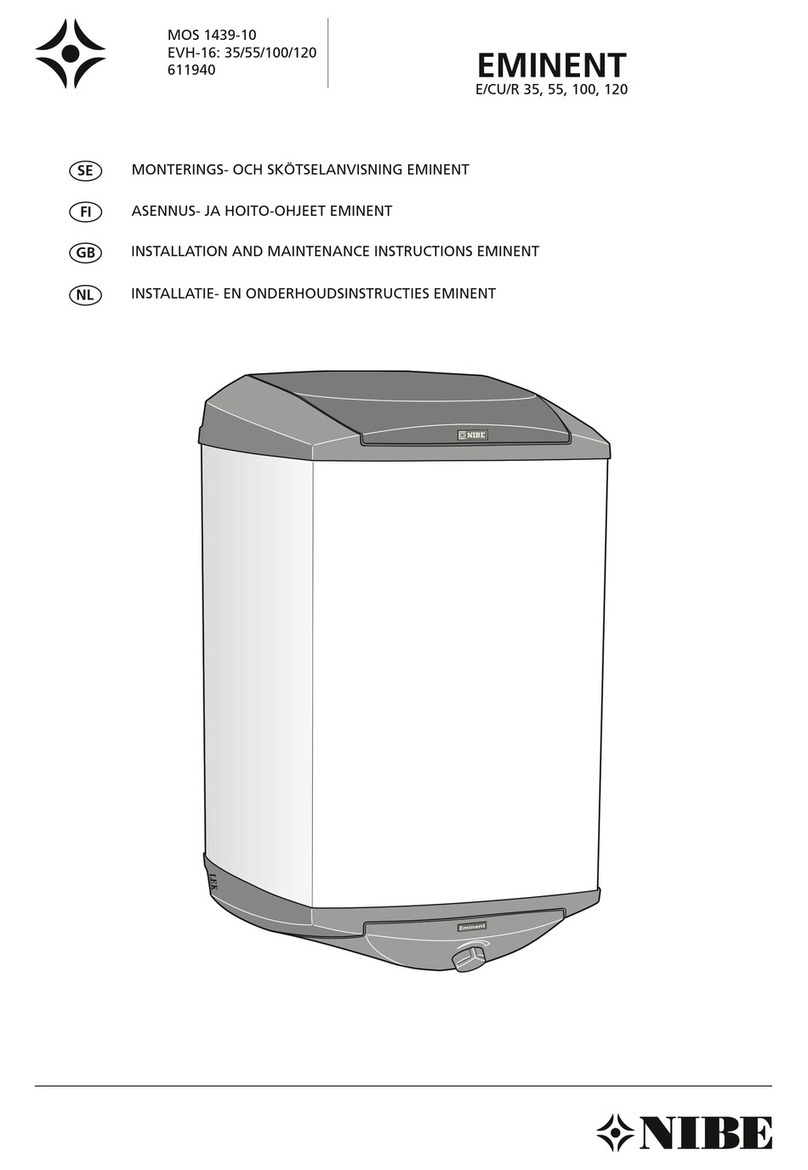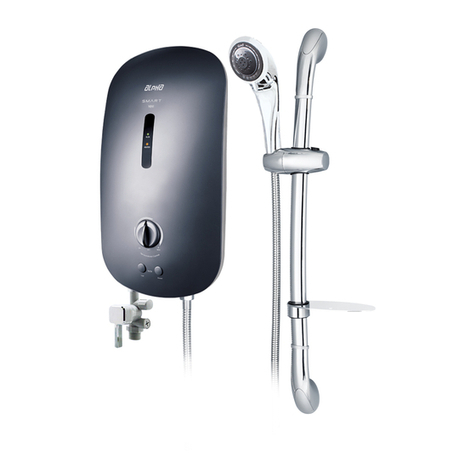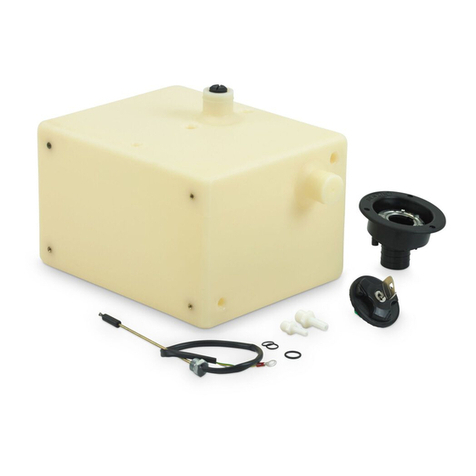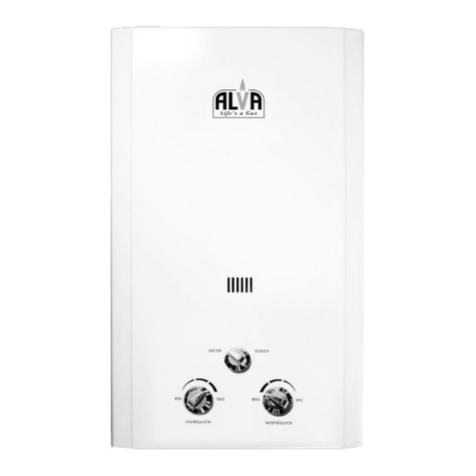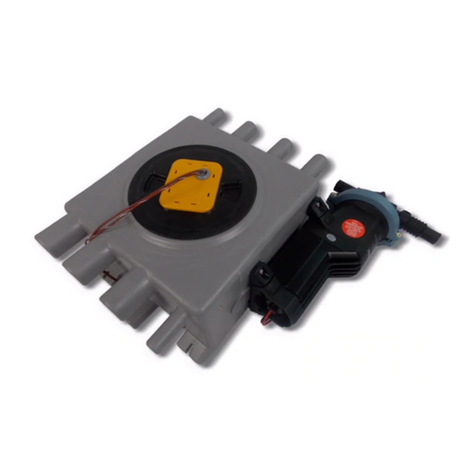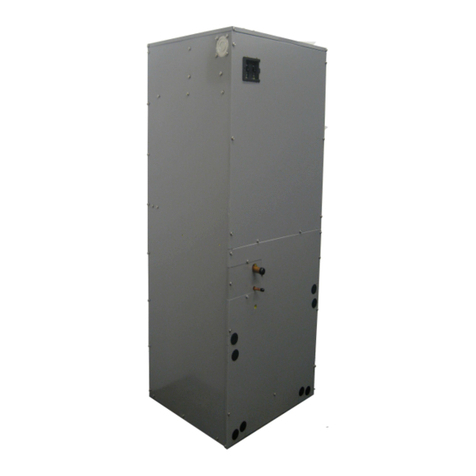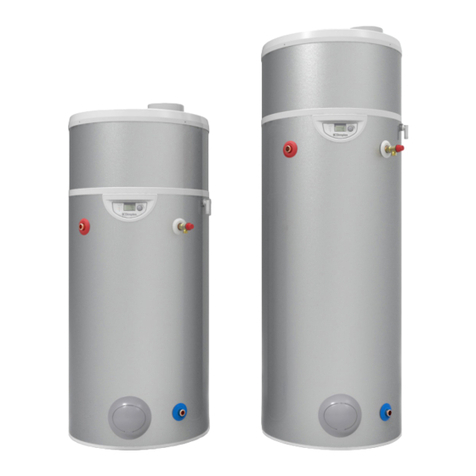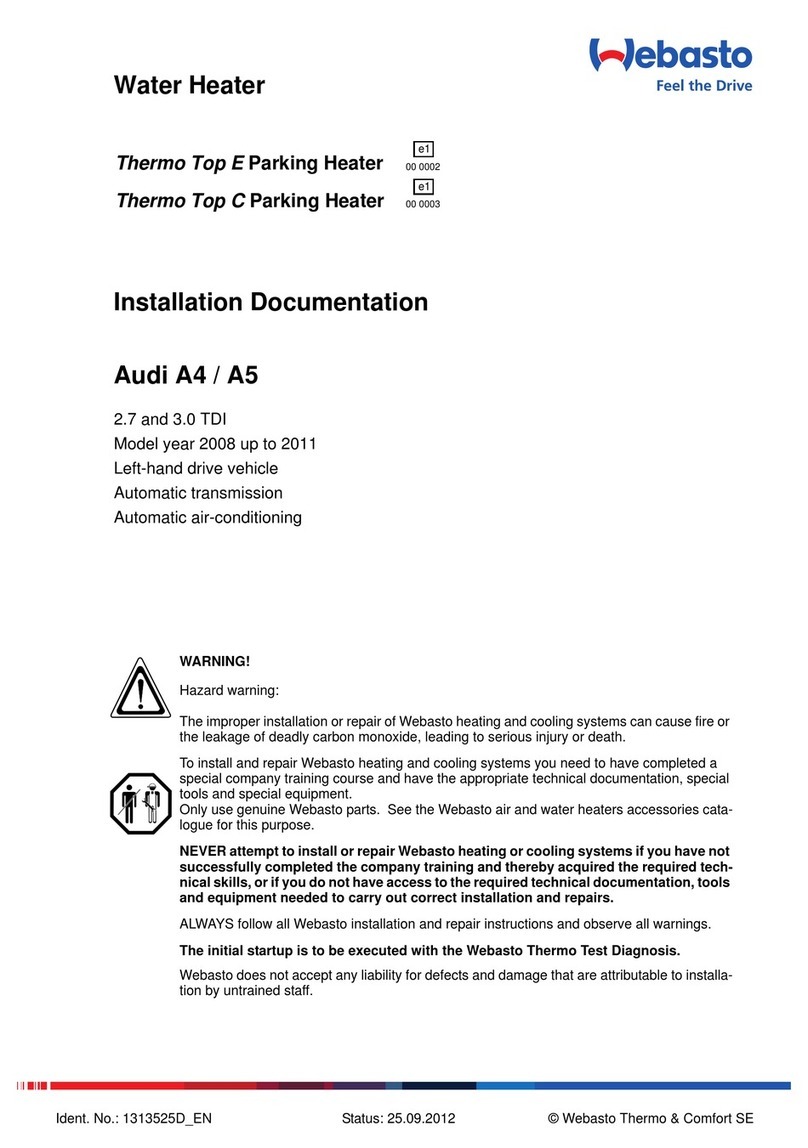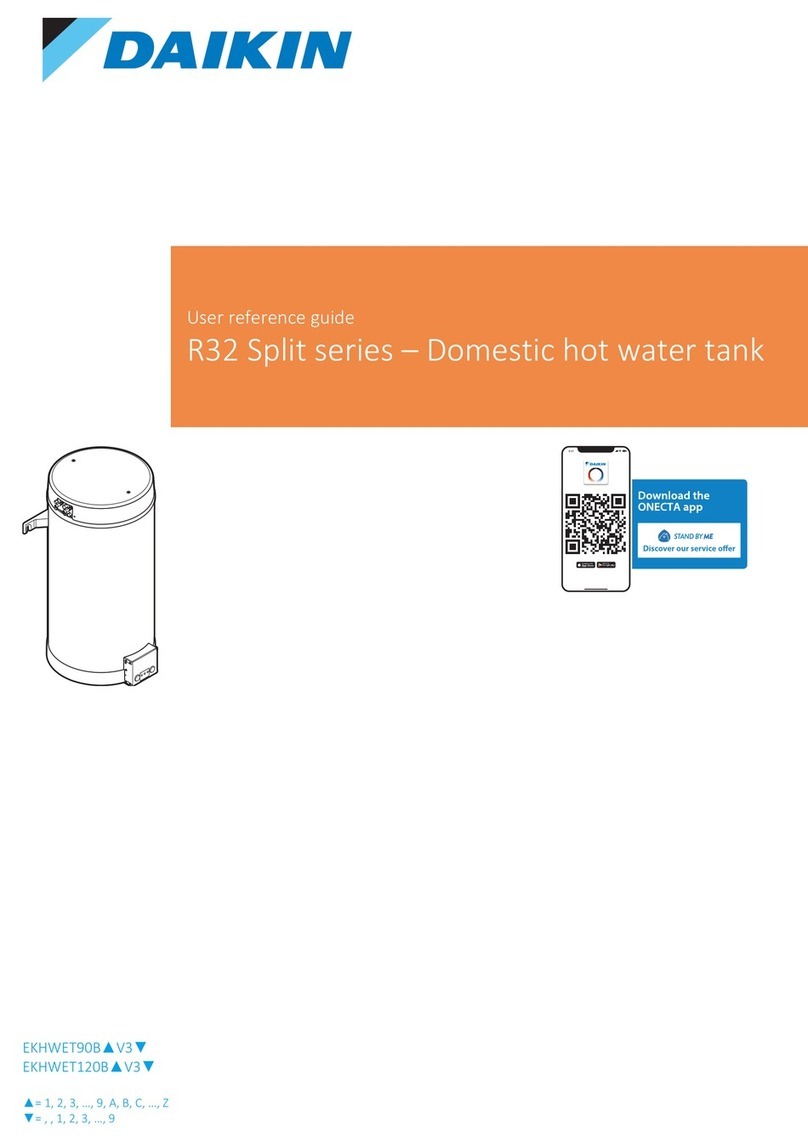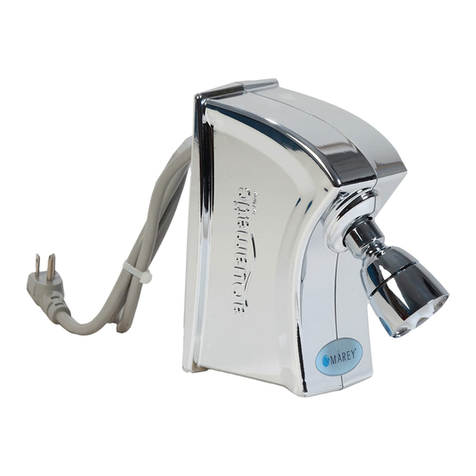
15
Theunitmay bevented horizontallythroughawallorverticallythrough
theroof. Pipe runs must beadequately supported along bothvertical
and horizontal runs as follows:
• ForSchedule40, 2"PVC,ABS,CoexCellular Corevent pipe:Every
3feet (0.9 m).
• ForSchedule40, 3"PVC,ABS,CoexCellular Corevent pipe:Every
3.5feet (1.1 m).
• ForSchedule40, 4"PVC,ABS,CoexCellular Corevent pipe:Every
4feet (1.2 m).
• ForSchedule 40, 2"CPVC vent pipe:Every 5 feet(1.5m).
• ForSchedule 40, 3"CPVC vent pipe:Every 6 feet(1.8m).
• ForSchedule 40,4"CPVC vent pipe:Every 6.5 feet(2.0 m).
It is imperative that the first hanger (or support) be located on the
horizontal run immediately adjacent to the first 90-degree elbow
from the vertical rise. Support method used should isolate the vent
pipe from the floor joists or other structural members to prevent
the transmission of noise and vibration. Do not support, pin, or
otherwise secure the venting system in a way that restricts the
normal thermal expansion and contraction of the chosen venting
material.
Ifthewaterheaterisbeinginstalledasareplacementforanexisting
power vented heater in pre-existing venting, a through inspection
of the existing venting system must be performed prior to any
installation work. Verify that the correct material as detailed above
hasbeenused,andthattheminimumormaximumventlengthsand
terminallocation as detailed inthismanual have been met. Carefully
inspect the entire venting system for any signs of cracks or
fractures,particularly at the joints between elbows and other fittings
and the straight runs of vent pipe. Check the system for signs of
sagging or other stresses in the joints as a result of misalignment
of any components in the system. If any of these conditions are
found, they must be corrected in accordance with the venting
instructions in this manual before completing the installation and
putting the water heater into service.
Except where instructed in this manual, the mixing of 2", 3" and 4"
vent pipe is NOTALLOWED. If 2" pipe is to be used, then a 2" to 3"
bell reducer is recommended. Figure 15 shows the recommended
location for the bell reducer. If the bell reducer is located at the
rubber boot on the blower assembly, then a short section of 3"
vent pipe needs to be installed in the rubber boot for proper
connection of the 2" to 3" bell reducer. That length can be of the
minimum length required for the connection.
If 4" pipe is to be used, then a 3" to 4" bell reducer is recommended.
Figure 15 shows the recommended location for the bell reducer. If
the bell reducer is located at the rubber boot on the blower
assembly, then a short section of 3" vent pipe needs to be installed
in the rubber boot for proper connection of the 3" to 4" bell reducer.
Thatlength canbe of theminimum length requiredfor theconnection.
The 40,000, 50,000, 55,000 and 62,500 BTU units are supplied
with a 2" Schedule 40 PVC 22.5° VentTerminal. If you decide to
vent with 3" or 4" pipe, a Schedule 40 DWV 45° Vent Terminal must
be used. For your convenience, we have included a screen for
both 3" and 4" VentTerminals.
The vent piping should be connected to the blower with a rubber
adapter and secured with hose clamps. The adapter and clamps
are provided with the heater.
Even the flue gas temperature leaving the blower is between 140°F
(69°C)and175°F(79°C),someinstallationswillhavewatercondensate
inthe ventpiping.If thisoccurs,then adequate meansof draining and
disposingof the condensateneedsto be made bythe installer.
CONDENSATE
Condensateformationdoesnotoccurinallinstallationsofpowervented
waterheaters, but shouldbeprotected against oninstallationswhere
itcan forminthe venting system.Condensation in theventing system
ofpowerventedwaterheatersisdependentupon installationconditions
including, but not limited to ambient temperature and humidity of
installationlocation,ambienttemperatureandhumidityofventingspace,
ventdischargeand slope, and product usage. In certain conditions,
installationsinunconditionedspace orhavinglonghorizontal orvertical
ventruns may accumulate condensate. In theseconditions, the vent
pipe should be sloped downward away from the blower assembly
1/4"(6.4 mm)per five feet(1.5 m) ofpipe butnotmore than11/2" (3.8
cm)in the total vent length. Ifthevent piping is vented level or sloped
upwards away from the blower assembly, then adequate means for
draining and disposing of the condensate needs to be made by the
installer(if condensateis detected). Ifyou havecondensate,then a3/
8"drain hose can be connected to thebuilt-indrainport of the rubber
booton the blower assembly. Foryour convenience, the rubberboot
is supplied with a removable cap on the built-in drain port. Prior to
operatingthe water heater, makesurethe removable cap is installed
onthe drain port (if a drain hose is not needed).
MAXIMUM AND MINIMUM VENT LENGTHS
40,000BTUUnits:
For 2" Venting, the maximum equivalent feet of pipe allowed
is40 feet (12.2 m). This doesnotincludethesupplied venttermination
forthewaterheater. Forthe2"venting,one 90°elbowis approximately
equal to 5 feet (1.5 m). One 45° elbow is approximately equal to 2.5
feet(0.8 m). It is recommended that atleast2 feet (0.6 m) of spacing
beused in between all 45° elbows and all 90°elbows.
For 3" Venting, the maximum equivalent feet of pipe allowed
is120 feet (36.6m).ThisdoesnotincludetheVentTermination(supplied
locally) for the water heater. For the 3" venting, one 90° elbow is
approximatelyequalto5feet(1.5m). One45°elbowisapproximately
equalto 2.5feet (0.8m). It is recommendedthat atleast 2 feet(0.6 m)
ofspacingbeusedinbetweenall 45° elbows and all 90°elbows.
For 4" Venting, the maximum equivalent feet of pipe allowed
is160 feet (48.8m).ThisdoesnotincludetheVentTermination(supplied
locally) for the water heater. For the 4" venting, one 90° elbow is
approximatelyequalto8feet(2.4m). One45°elbowisapproximately
equalto4feet(1.2m). Itisrecommendedthatatleast2feet(0.6m)of
spacingbe used in between all 45° elbows and all 90°elbows.
50,000BTUUnits:
For 2" Venting, the maximum equivalent feet of pipe allowed
is40feet (12.2 m).Thisdoes notincludethesuppliedVentTermination
forthewaterheater. Forthe2"venting,one 90°elbowis approximately
equal to 5 feet (1.5 m). One 45° elbow is approximately equal to 2.5
feet(0.8 m). It is recommended that atleast2 feet (0.6 m) of spacing
beused in between all 45° elbows and all 90°elbows.
For 3" Venting, the maximum equivalent feet of pipe allowed
is120 feet (36.6m).ThisdoesnotincludetheVentTermination(supplied
locally) for the water heater. For the 3" venting, one 90° elbow is
approximatelyequalto5feet(1.5m). One45°elbowisapproximately
equalto 2.5feet (0.8m). It is recommendedthat atleast 2 feet(0.6 m)
ofspacingbeusedinbetweenall 45° elbows and all 90°elbows.




















